Salomon Elixir Mid Gore-Tex Boots review: Chunky hooves with a rock-and-roll sole
Bouncy, maximist, over-protective boots made for long days on a variety of low-level trails in all kinds of conditions
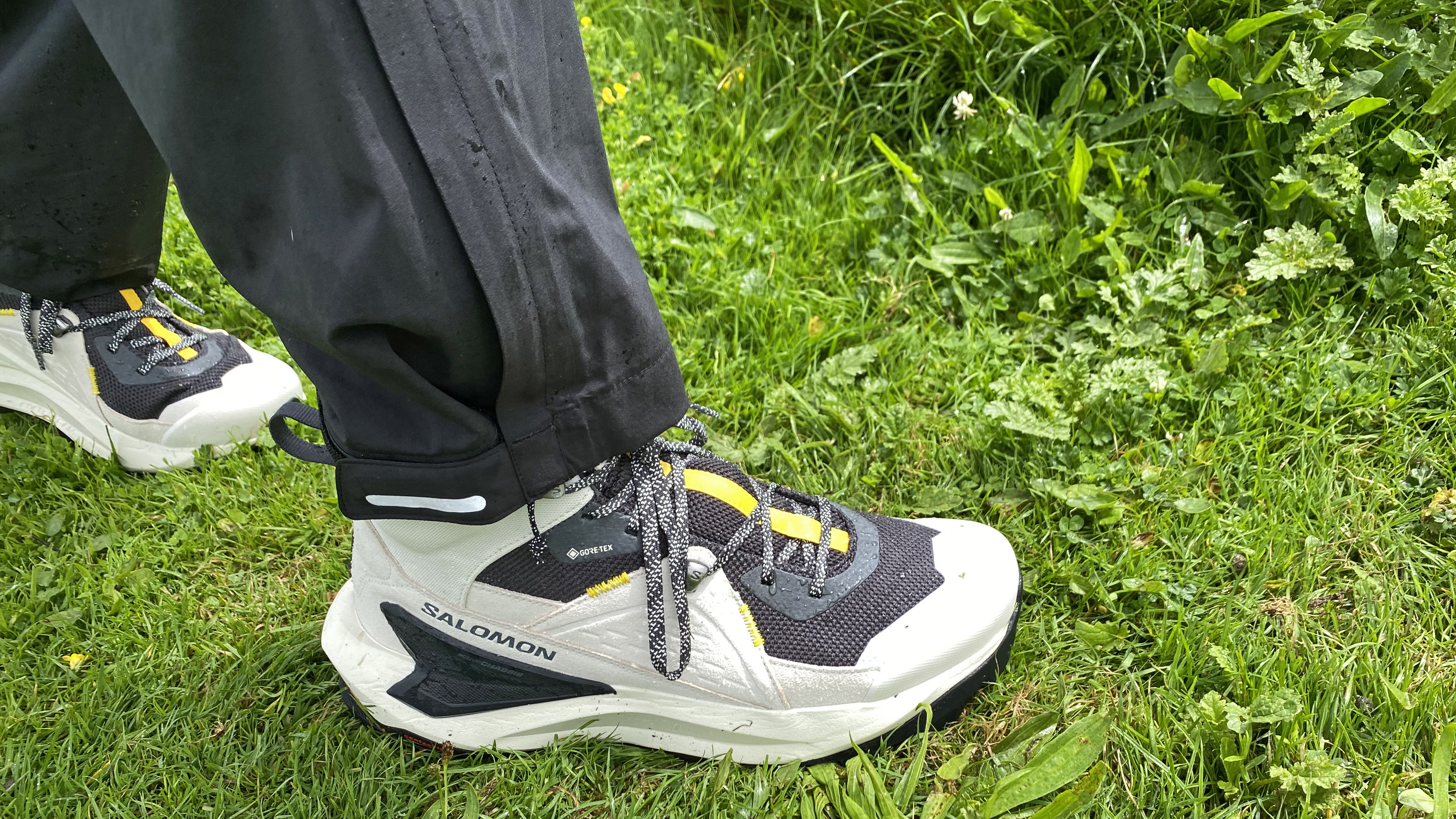
If you’re not overly bothered about getting feedback from the trail, and you enjoy walking in zero-drop hiking boots with a rocker and huge amounts of cushioning, the highly supportive Salomon Elixir Mid GTX are well worth checking out. They’re pretty warm to wear during hot days, but these boots are reliably waterproof and supply a massive amount of protection right across the foot, from toes to ankles. I’d avoid the white ones, though…
-
+
Huge amounts of toe, heel and ankle protection
-
+
Rocker design promotes a positive walking gait
-
+
Good foot and ankle support
-
+
Excellent lace system
-
+
Modestly aggressive lugs supply grip without collecting mud
-
-
Too chunky
-
-
Zero trail feel
-
-
Reverse camber sole profile won’t suit all
-
-
Feel hot
-
-
No recycled material used
Why you can trust T3

To be brutally honest, when I first liberated the Salomon Elixir Mid Gore-Tex Boots from their box, I was a bit shocked by their look and feel. I’m used to testing trail running shoes from Salomon, which are typically sleek and speed-orientated. Even when the French brand has produced walking boots in the past, such as the excellent Cross Hike 2, the design has tended to prioritise pace over protection.
This is definitely not the case with the enormous Elixirs. These chunky mid-boots offer a lot of protection for your feet, and although they aren't heavy as such, they are far from being nimble. Are they good enough to earn a spot in T3's best hiking boots guide? I put on my bright white boots and hit the trails to find out.
Salomon Elixir Mid Gore-Tex Boots review: specifications
- Weight per boot g (size UK 10.5): 525g
- Colours: Vanilla ice, phantom & Lemon / Black, magnet & quiet shade / Black, dried herb & southern moss
- Upper: Leather & textile
- Membrane: Gore-Tex
- Sole: Contragrip (Rubber)
- Sizes (UK): 6½ – 13½
- Best for: Mixed trails at a sub-alpine level, in all conditions
Salomon Elixir Mid Gore-Tex Boots review: Price and availability
The Salomon Elixir Mid Gore-Tex Boots are available now for men and women, and they have an RRP of £200 in the UK, $210 in the US, and $350 in Australia.
I have been testing the ‘Vanilla Ice’ version of these boots, which are essentially white – a flat-out crazy colour to make hiking boots in, no matter where you do your walking. Aside from the fact that they obviously start to look a bit grubby as soon as you encounter any mud, they also bear more than a passing resemblance to basketball boots, so I felt a little like a lost rapper while out on the trails.
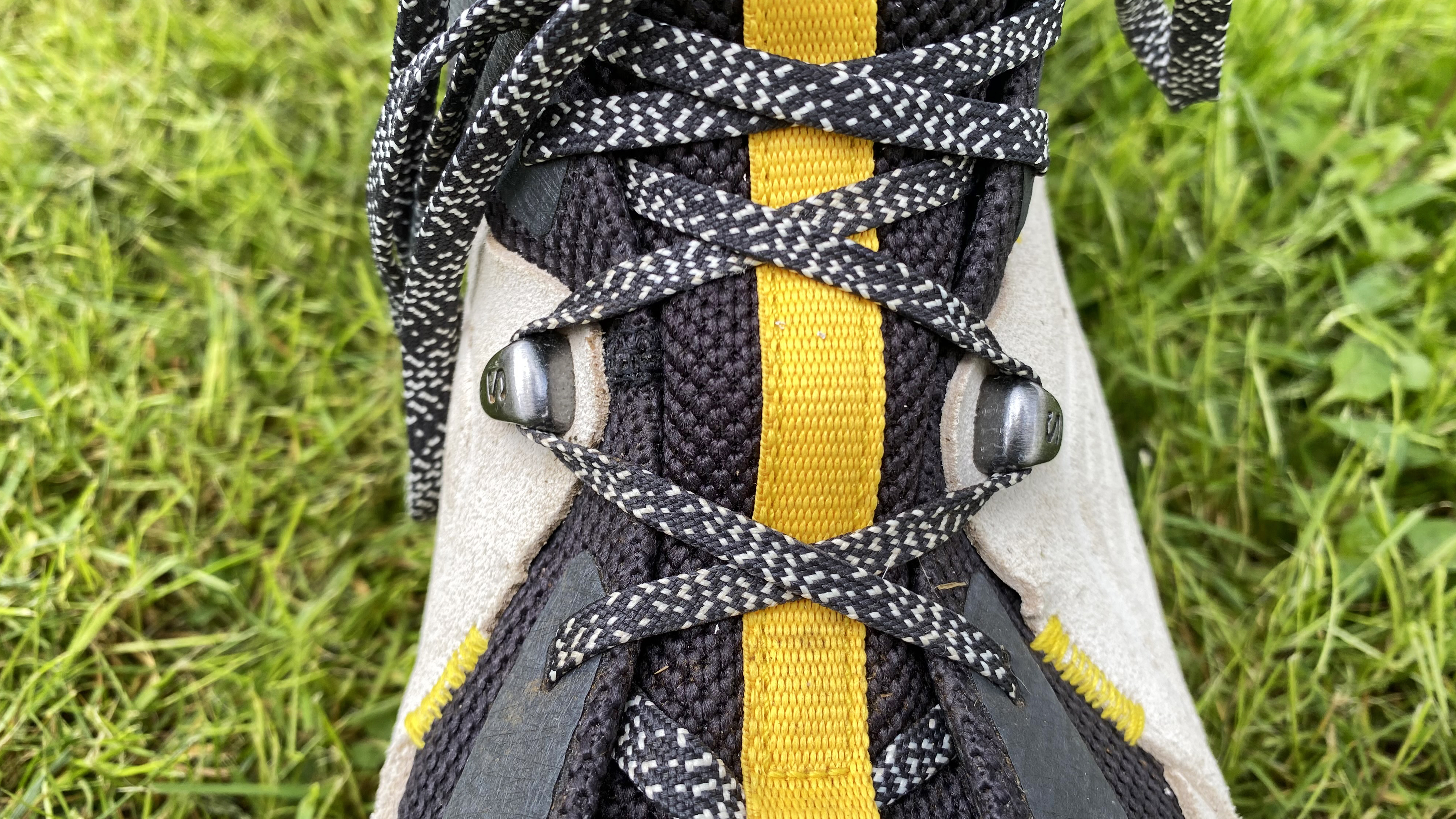
Salomon Elixir Mid Gore-Tex Boots review: Design and materials
The upper chassis of the Elixirs is comprised of soft leather, reinforced with textile elements. These are mid-height boots, with what Salomon call a ‘Sensifit’ construction, intended to supply secure foothold and lateral support.
The collar area is massively padded, with extra protective cushioning on either side of your ankle. There is also a large toe bumper, to protect your pinkies from stubbing injuries, and your heels are kept safe by the oversized midsole, which protrudes right out the back of the boot.
The integrated tongue is also substantial, supplying comfort, cushioning and protection from the ingress of water, snow, grit and other trail debris. There are a couple of pull loops – one on tip of the tongue and the other on the top of the heel – which make it easier to get your feet into the boots. The lacing system is decent, with one pair of speed hooks at the top and wide-placed eyelets on the forefoot that enable you to get a really good, tight and secure fit, which helps supply confidence on more technical trails.
Get all the latest news, reviews, deals and buying guides on gorgeous tech, home and active products from the T3 experts
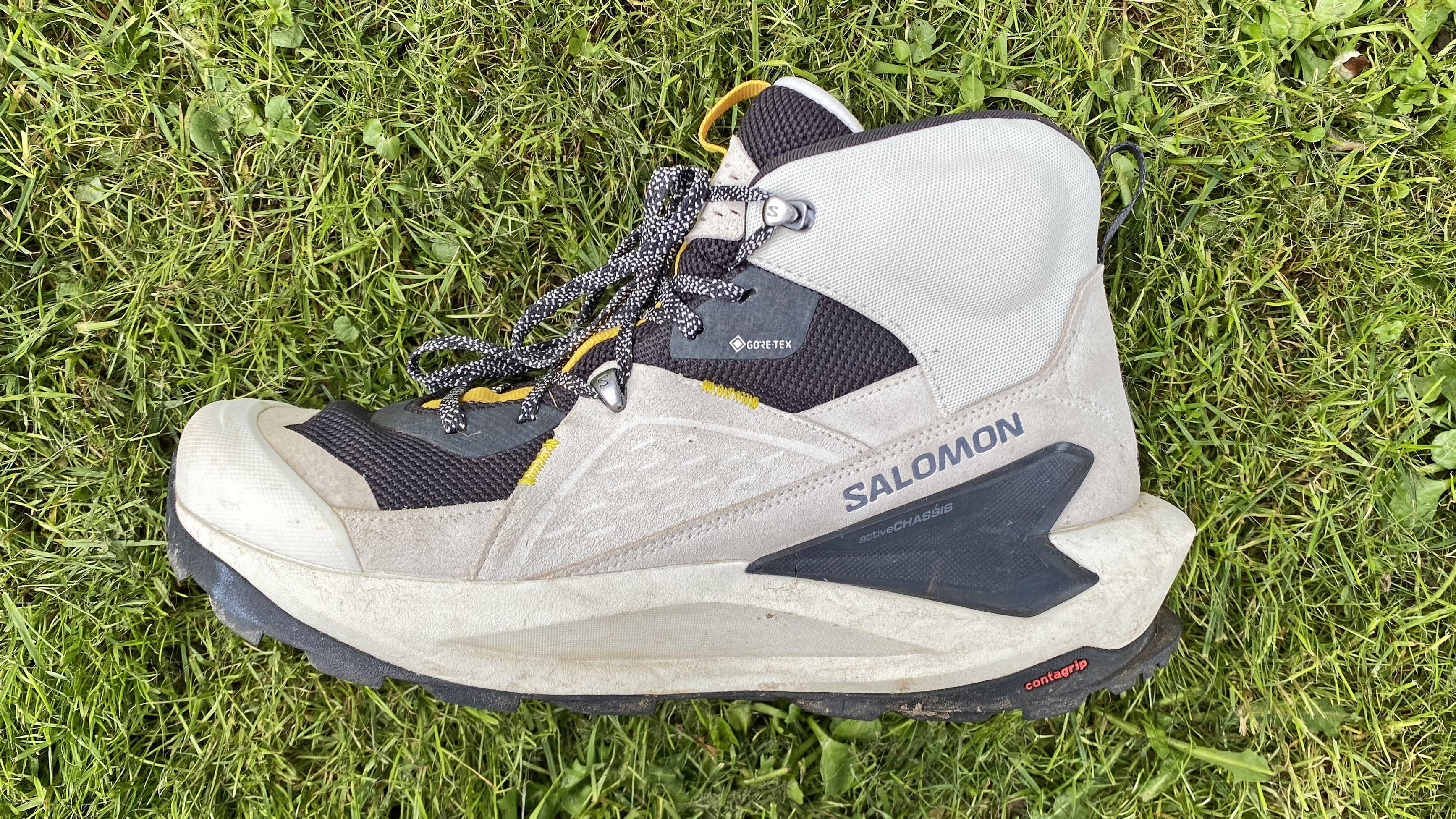
A Gore-Tex membrane acts as a weatherproof layer across the chassis of the Elixirs, and the top of the boot features mesh panels to assist with levels of breathability. The rubber Contragrip outsole boasts 5mm lugs arranged in a way that provides grip during ascents and braking control during the downhills. These studs aren’t particularly aggressive, and they’re widely spaced to avoid mud becoming accumulated in between them.
It’s the midsole of the Elixir’s that will raise the most eyebrows, though, because they are massive – a lot like hiking and running hoofs from Hoka – those pioneers of the maxi sole. Absolutely loaded with ‘Energy Foam’, the Elixir’s midsoles are designed to supply super amounts of cushioning and rebound momentum.
They also feature a reverse camber profile, which means instead of having a heel-to-toe drop, the bottom of the boot is gently rounded, like the bottom of a canoe – this is sometimes called a rocker, and you can literally rock back and forth, but it is intended to promote a good, positive walking gait.
The Elixirs are especially heavy – at 525g per boot (men’s size 11), they’re certainly more weighty than the Cross Hike 2 mentioned above but remain considerably lighter than more technical boots such as the Arc’teryx Acrux LT GTX.
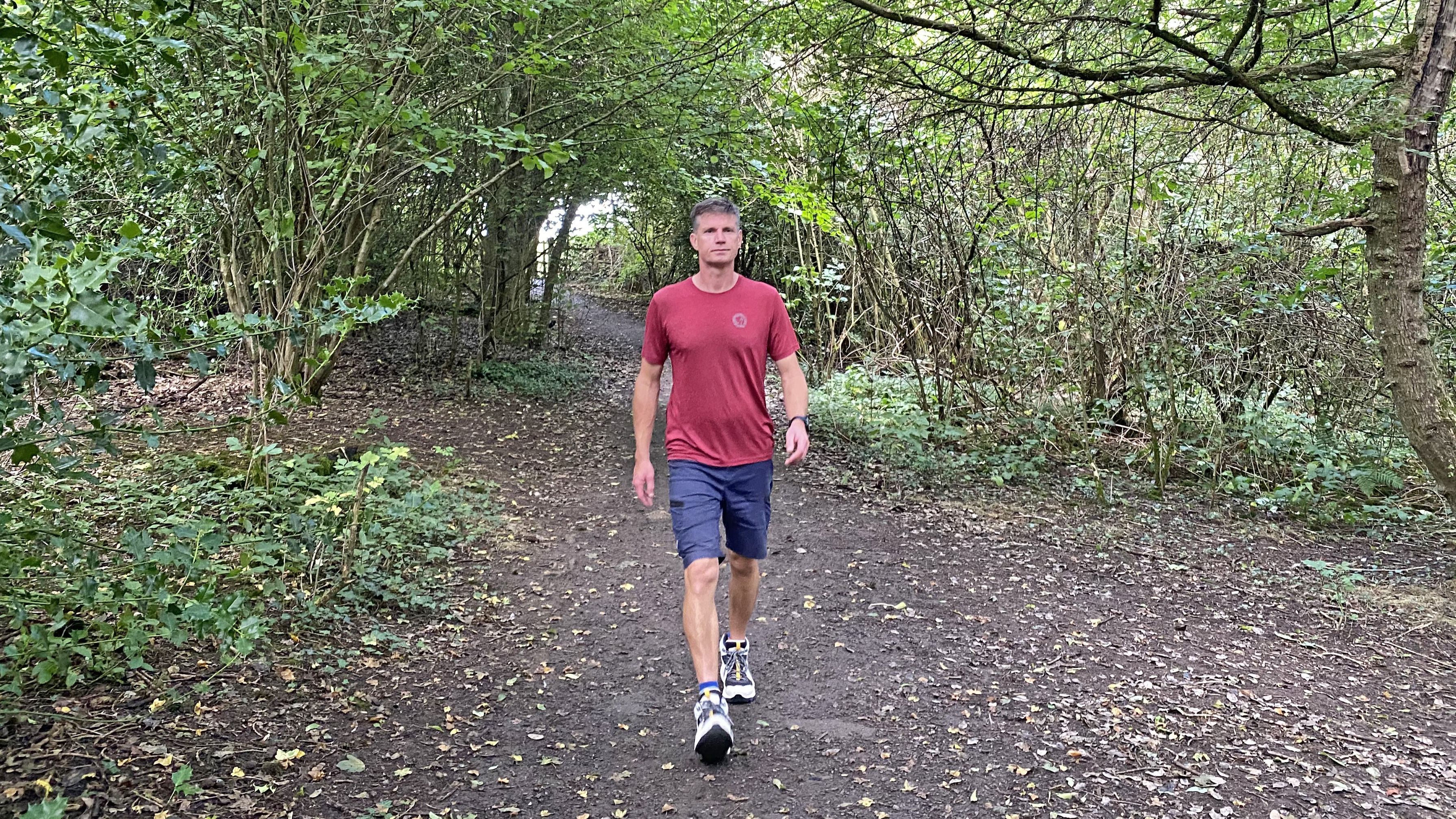
Salomon Elixir Mid Gore-Tex Boots review: Comfort and performance
The Salomon Elixir boots are instantly comfortable, straight out of the box, and I found that the excellent-quality partially leather upper required no breaking in at all. What does require some getting used to, however, is the additional height these boots bestow upon the wearer.
With the incredibly chunky midsole, I found myself several centimeters taller than usual, which literally affected my spatial awareness, so that I would brush my head against trees branches I usually walk under. I also unintentionally scuffed my feet occasionally while walking in the Elixirs, due to the extra height of the midsole.
However, even my dull brain managed to adjust to these variables after a short space of time, and subsequently I started to feel the benefits of the reverse camber and massive amounts of cushioning the Elixir deliver. The big slabs of Energy Foam in the midsole certainly supply a lot of rebound and suspension, and the rocker just keeps you rolling forwards without even thinking about it.
Walking in these boots is the hiking equivalent of cycling a full-suspension mountain bike – and I quite enjoyed the sensation of bouncing along the trails. I especially appreciated this during a sequence of longer walks on mixed terrain, which included rock-hard, sun-parched paths that were heavily rutted. I think these generous midsoles certainly saved my knees from suffering a beasting on this sort of landscape.
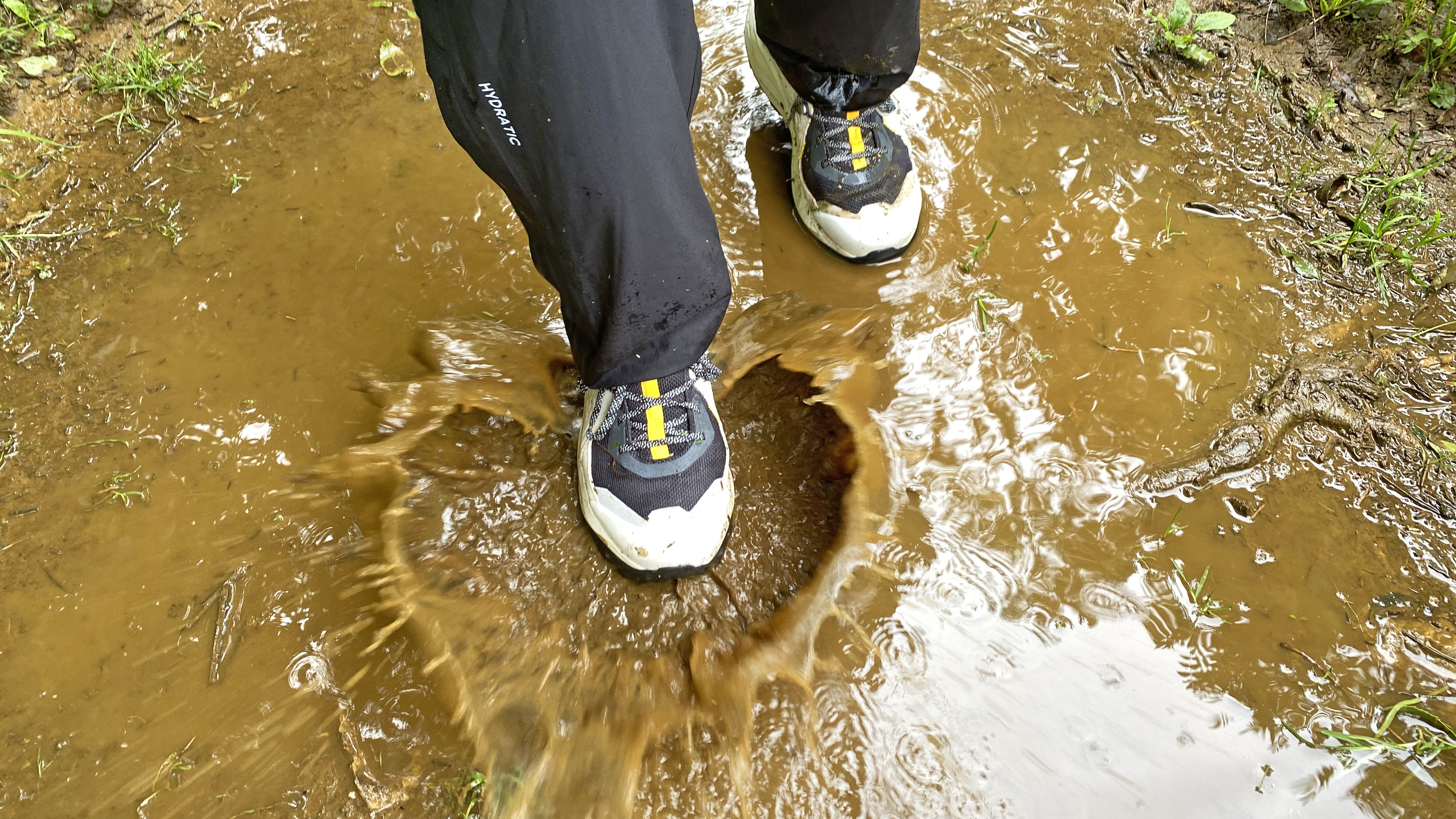
But I did use them in wetter weather too, and during soggy outing on muddy tracks and trails I found them to be reliably waterproof, even if the white uppers did start to look less Vanilla Ice and more mudcake. On the downside, despite the well-known properties of Gore-Tex, I didn’t find the Elixir to be very breathable at all, and my feet got very hot hulking them around on warmer days.
I can report that the tongue has successfully kept dirt and trail juice out of the boots during many miles of hiking so far, and I found the lacing system and general hold of the boots to be good, too. Plus, the lugs were adequate to supply grip and control, without being overly aggressive or picking up too much muck.
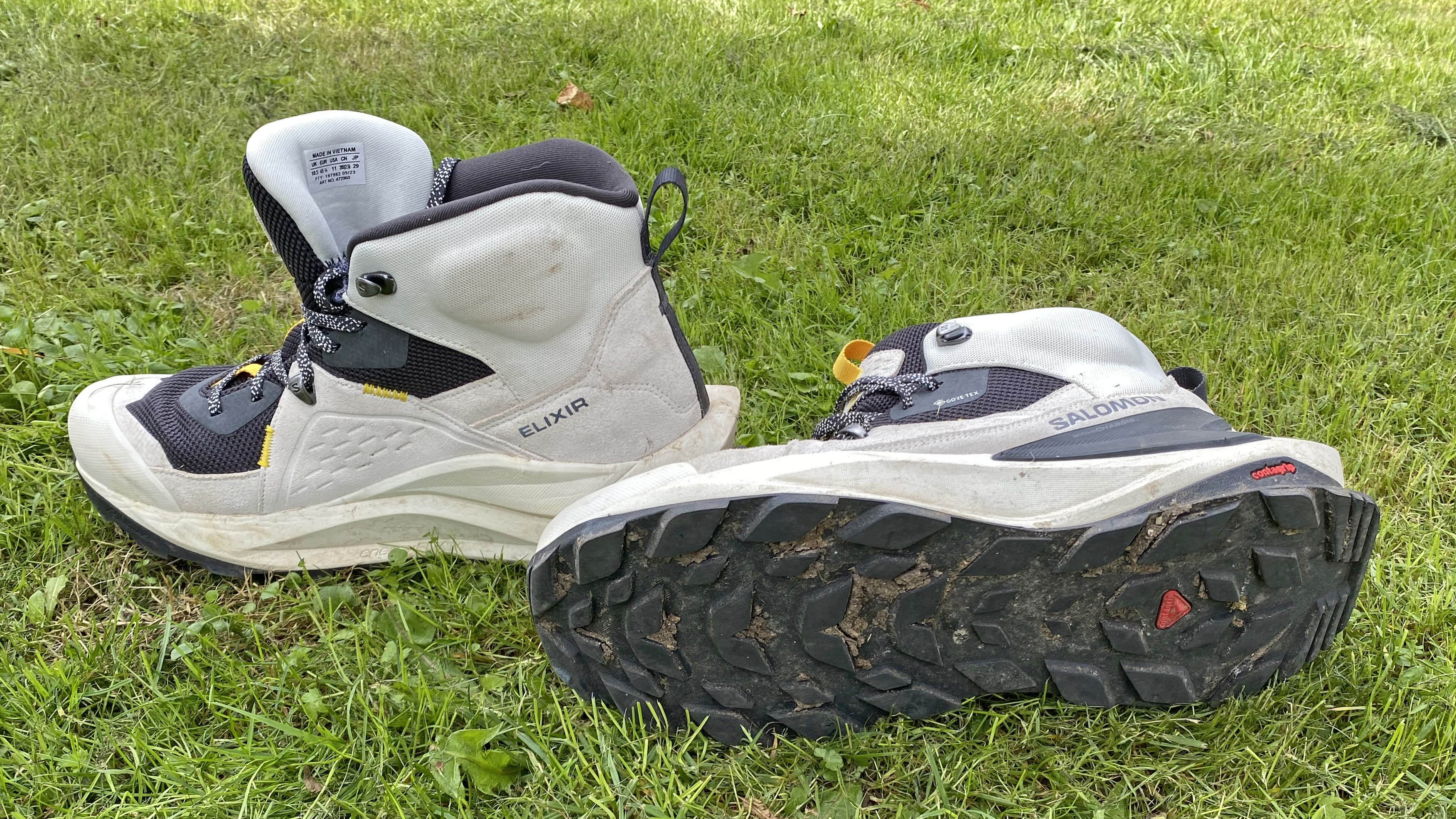
Salomon Elixir Mid Gore-Tex Boots review: verdict
In many ways, the Elixir are a bit of enigma, and they’re certainly a departure from what we would usually expect from Salomon, who seem to have been influenced by the success of some Hoka footwear that has long featured the kind of maxi midsoles seen on these boots.
I can’t fault the level of protection these boots offer, I’m just a bit confused about why they need to boast such serious padding, considering they’re not really designed for extreme use in any other area. The rocker-equipped outsole is good for maintaining forward momentum for example, but it offers none of the rigidity required to do any rock edging that might be necessary on more technical trails, and the chunky design and lack of tactile dexterity makes them holly unsuitable for such activity anyway.
They’re more like a three-season boot intended for tackling mildly technical trails in various kinds of weather. The foot and ankle support is good (certainly decent enough for use while carrying a large backpack), and the grip on the outsole is adequate without being sensational. But they wrap your feet up in metaphorical cottonwool like an anxious first-time parent, to the extent that they’re so chunky they barely allow you to cut loose and have some fun while in the wilds.
The reverse camber and massive midsole take a little bit of getting use to, and I’m not completely sold on their benefits (or the overall look), but my knees did appreciate the extra suspension on walks across hard-packed surfaces.
The waterproofing is good, but the breathability is not, and I think these boots are best suited for wearing on day and weekend-long walks on sub-alpine trails in the shoulder months of autumn and spring. Your joints will be happy, but don’t expect and trail feedback, mind your head when bouncing along underneath trees and steer clear of the white ones, unless you’re planning on wearing them to the basketball court and DJ booth rather than getting down and dirty on the trails.

Author of Caving, Canyoning, Coasteering…, a recently released book about all kinds of outdoor adventures around Britain, Pat Kinsella has been writing about outdoor pursuits and adventure sports for two decades. In pursuit of stories he’s canoed Canada’s Yukon River, climbed Mont Blanc and Kilimanjaro, skied and mountain biked across the Norwegian Alps, run ultras across the roof of Mauritius and through the hills of the Himalayas, and set short-lived speed records for trail-running Australia’s highest peaks and New Zealand’s nine Great Walks. A former editor of several Australian magazines he’s a longtime contributor to publications including Sidetracked, Outdoor, National Geographic Traveller, Trail Running, The Great Outdoors, Outdoor Fitness and Adventure Travel, and a regular writer for Lonely Planet (for whom he compiled, edited and co-wrote the Atlas of Adventure, a guide to outdoor pursuits around the globe). He’s authored guides to exploring the coastline and countryside of Devon and Dorset, and recently wrote a book about pub walks. Follow Pat's adventures on Strava and instagram.